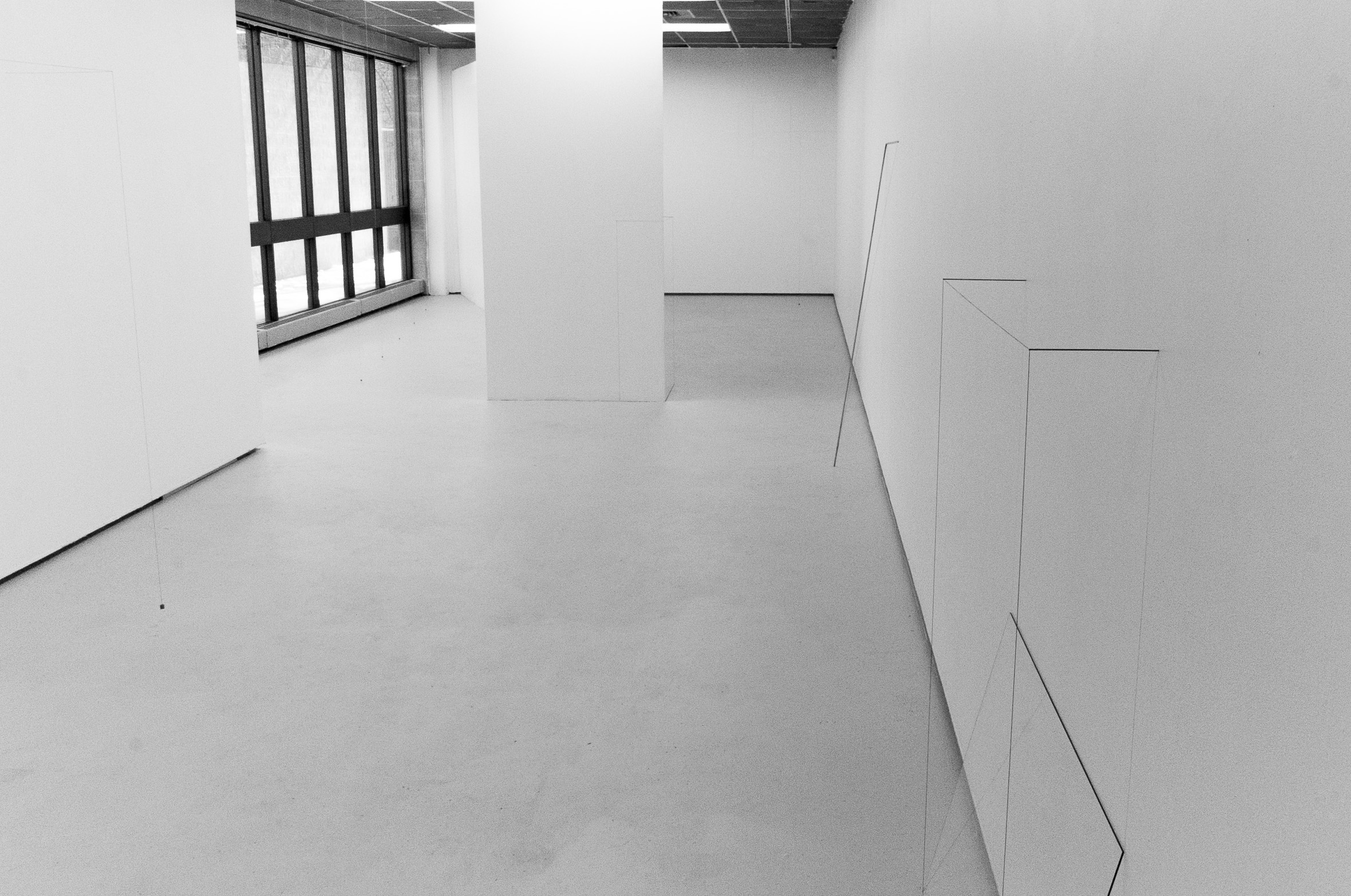
Installation artist Jong Oh takes a minimalist approach to his work, building structures by suspending Plexiglass and painted string in the air.
As is his practice, before creating his exhibition “Sotto Voce” in the Contemporary Art Galleries, Oh waited for the uniquely configured space to speak to him.
“I come to the gallery or studio and stay there for a few days looking at the space. I listen to the space,” the New York-based Korean artist says. “I don’t have any plans when I get to the space. The space has to allow me to do something. The process is intuitive, but it’s also a lot of measuring and math. Some people think when they see my work that it’s all planned and I know everything before I start, but actually it’s very intuitive.”
Oh spent his childhood in Grand Canaria, Spain. He earned a bachelor’s degree in sculpture from Hongik University in Seoul and an FMA from the School of Visual Art in New York City, where he now lives. He has had solo exhibitions in Austria, Germany, and Mexico.
For Oh’s exhibition in Storrs, the gallery walls are painted white and, as is typical of his work, he uses thread, Plexiglass, and some found objects to create illusions that can change in appearance as a visitor walks through the gallery. He describes his work as “line sculpture.”
This is nowhere better illustrated than on the south wall of the gallery, where a glass window changes the light moving across the diagonal wall that separates the back part of the space. Three rectangles painted in transparent glossy paint on the horizontal wall of the installation seem to come and go as the light coming in from the outside changes and four strings hanging from the ceiling cast different shadows on the floor and wall.

“I tried to make a flexible piece that could change. It breathes with the light,” Oh says walking through the space. “This glossy transparent white paint changes depending on where you stand. At night it changes with the dark window. I wanted to make something that responded to both walls. I wanted to make a measured, calculated piece, but flexible at the same time.”
Oh says unlike most artists, he revels in using the corners of galleries, which he describes as “the best place for me.”
“It’s good for giving me more possibilities,” he says. “I have two walls and can go diagonally with a design.”
In the far corner on the right side of the Contemporary Art Galleries, Oh uses the space to create an image of a dark line emanating from a piece of clear Plexiglass hung from the ceiling stretching to create a rectangular box attached to the adjacent wall. Using a corner of the diagonal wall, he creates a design with a line that starts on the edge of the wall facing the gallery entrance and wraps around the wall and into a triangular structure attached to the other side of the wall.
“The metal rod is pulling the string straight,” he says. “All these objects have a physical function. I like the contrast between the illusion and the actual tangible. It’s small engineering.”

The artist has started a new series of work recently, adding water images into his creations. While serving a residency in Austria, he took photos of waves moving across the Danube River, but uses them in black and white rather than in color. The image of the river sits at the back of the structure, and lines forming a platform before the image move toward the viewer.
“I wanted to start to work with outdoor spaces. I thought a photographic image would be a good place to start,” he says. “I don’t use that much color, because it’s too strong a gesture and could destroy the balance of the work. So I’m very careful with the colors. This was the texture of the water.”
Oh says minimalistic work usually requires a great deal of space between the objects, allowing the viewer to see the work in its entirety, and that the Storrs exhibit was a new experience.
“I was quite challenged, because it’s kind of small and it has the angle on the wall,” he says. “I wanted the sense of being surrounded by something. First I want [visitors] to sense it with their bodies, then I want them to take their time, go closer, and walk around inside. I like when people do that. For this piece, some people will go through the lines. I like when they’re reacting with their body.”
“Sotto Voce: Installations by Jong Oh” will continue through May 6 at the Contemporary Art Galleries in the Department of Art & Art History Building, 830 Bolton Road, Storrs. For more information go to the CAG website.



